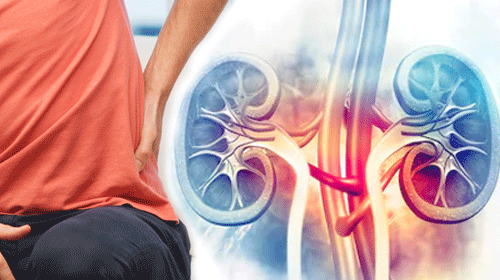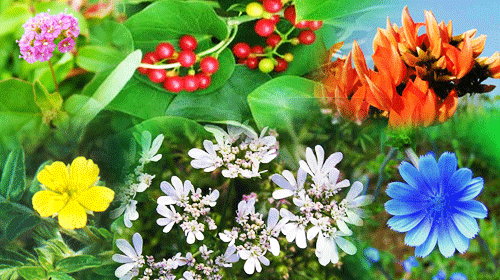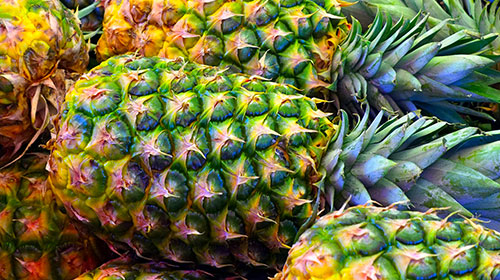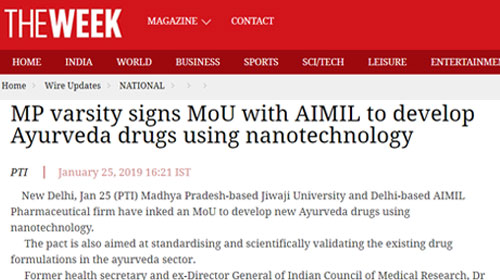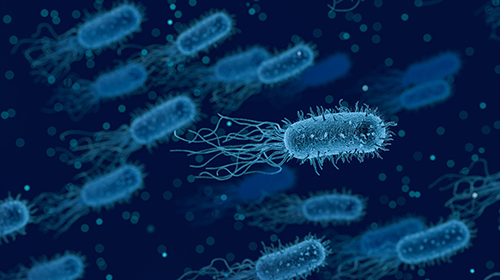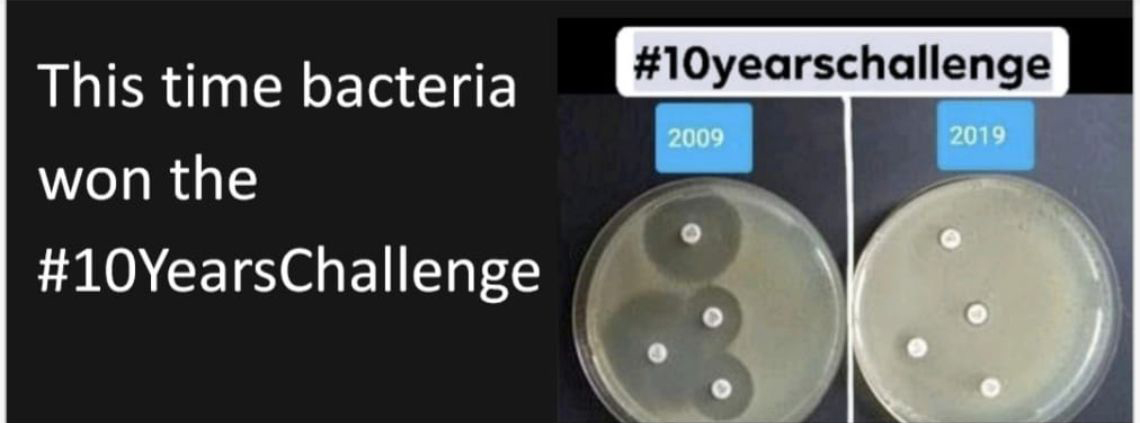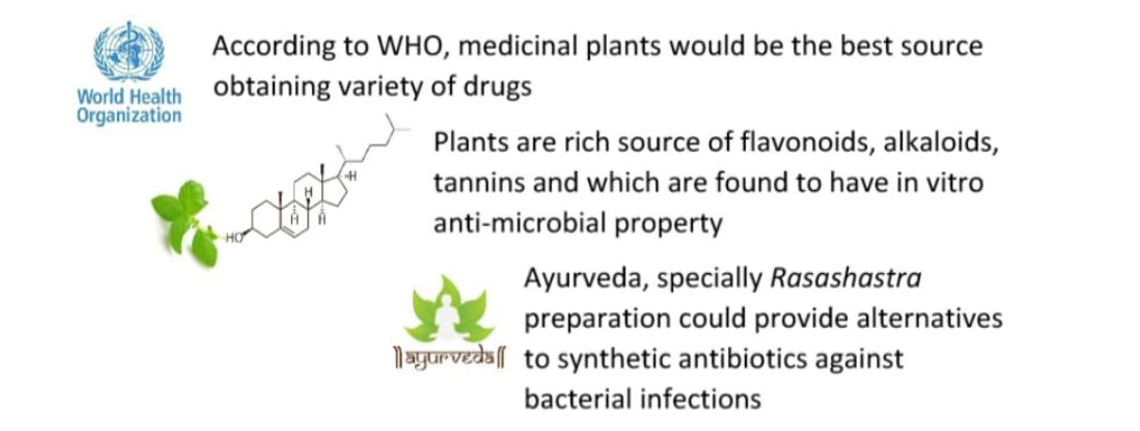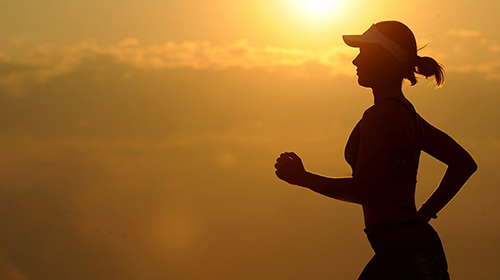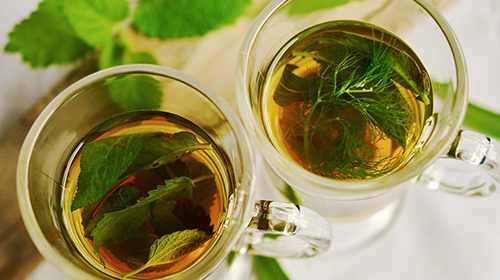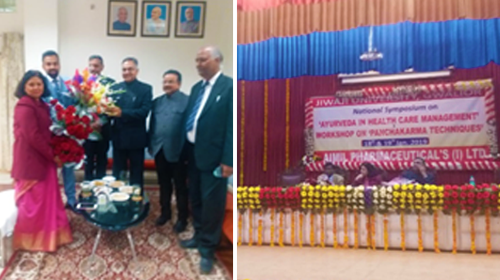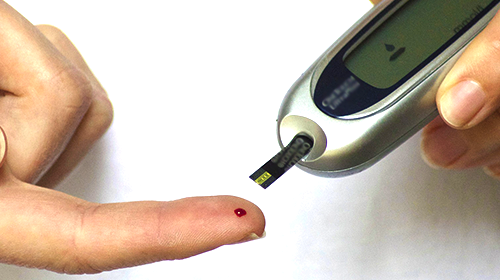Kidneys are our bodies' unsung heroes and are vital in helping us maintain our health and vitality perform the most of major excretory processes in the human body, hence become the prime target organ for various circulating toxins that may cause nephrotoxicity. Kidneys filter about 180L of blood per day and work 24/7 keeping all other body systems in balance.
Neeri-KFT, a polyhedral sugar free syrup manufactured by Aimil Pharmaceuticals India Ltd., is especially designed for restoring biochemical parameters and correcting the impaired renal physiology. It is mainly prescribed for improving the poor kidney functions that may be due to many conditions like diabetes, glomerulonephritis, hypertension, generalized oedema, nephrotoxicity etc.
The Phytoconstituents available in the herbs that are used in this formulation dominantly act as potent anti-oxidant, immune modulator and nephroprotective by multi mechanism. Thereby tends check further degenerative alterations and promotes restoring the functional capacity of nephrons, and normalizes the deviated functional parameters of kidney like serum creatinine, serum urea, serum proteins etc. The NEERI-KFT contains extracts of the following herbs.
Punernava (Boerhavia diffusa L.): due to its use in the treatment of diseases of urinary system and the possibility of the presence of regenerative property of Punernava as its name suggests and due to the excellent regenerative capacity possessed by the kidneys. Punernava has diuretic, anti-inflammatory, anti-oxidant and possible antibacterial and cardiotonic effect. By virtue of such properties this drug initiates early recovery of the kidneys from different diseases and facilitates regenerative repair.
Giloe (Tinospora cordifolia (willd.) Miers): Giloe is a potent plant material that is widely used in the Indian system of medicines as a tonic, vitaliser, immunomodulator and as a remedy for metabolic disorders. The plant stem has been considered as an indigenous source of medicine with anti-diabetic, immunomodulatory, hepatoprotective, and anti-pyretic actions. A variety of active components derived from the plant like alkaloids, steroids, diterpenoid that are responsible for various activities like anti-diabetic, anti-periodic, anti-spasmodic, anti-inflammatory, anti-arthritic, anti-oxidant, anti-allergic, anti-stress, anti-leprotic, anti-malarial, hepatoprotective, immunomodulatory and anti-neoplastic activities.
Kamal (Nelumbo nucifera Gaertn.): There are several therapeutic benefits of this plant for which different parts are used. Several bioactive compounds have been derived from different parts of the plant belonging to different chemical groups, including alkaloids, flavonoids, glycosides, triterpenoid, vitamins etc. Pharmacological activities of different extracts of rhizomes and flowers, and the compounds isolated from these have been demonstrated activities like antioxidant, anti-inflammatory, anti-diabetic, hypoglycaemic, immunomodulatory and other activities.
Palashpushp (Butea monosperma (Lam.) Taub.): Butea monosperma is reported to have medicinal potential in various ancient literatures. The plant is known for antioxidant, anti-obesity, anticancer, and chemoprotective potential and also known for hepatoprotective and antidiabetic properties. The two principal phytochemicals, Isobutrin and butrin, are responsible for hepatoprotective and antioxidant activity. By the virtue of antioxidant activity, Butea monosperma demonstrated nephroprotective activity.
Gokshru (Tribulus terrestris L.): Gokshru is one of Ayurveda’s best herbs for the kidneys. The herb is very effective in most of the urinary tract disorders. This is because it promotes the flow of urine, and cool and sooth the membranes of the urinary tract. The herb has also been used to remove urinary stones and stop bleeding. It is known to nourish and to strengthen the kidneys and reproductive organs. Recent pharmacological studies demonstrated that Gokshru significantly reduced the excretion of oxalate, calcium, and phosphate along with decreased levels of blood urea nitrogen, uric acid and creatinine in serum and also reduced hyperoxaluria that caused oxidative stress and restored antioxidant enzyme activity and their expression profile in kidney tissue.
Sigru (Moringa oleifera Lam.): Sigru is popularly called ‘the miracle tree’ with potentials for the treatment of various diseases such as cancer, hypertension and diabetes mellitus. It has been reported that leaves contain abundant glucosinolates, isothiocyanates, carotenoids, vitamins, high proteins and carbohydrates. Leaves are reported to have 4 times the vitamin A of carrots, 7 times the vitamin C of oranges, 4 times the calcium of milk, 3 times the potassium of bananas, 3⁄4 the iron of spinach, and 2 times the protein of yogurt”. People may be less likely to develop stones in the kidneys, bladder or uterus if they ingest moringa extract. Moringa contains high levels of antioxidants that might aid toxicity levels in the kidneys.
khas (Chrysopogon zizanioides (L.) Roberty; Veteveria zizanioides (L.) Nash.): Root of Vetiveria zizanioides have been suggested in the Indian system of medicine for a number of diseases. The essential oil of vetiver root has been shown to possess antioxidant activity. The health benefits of Vetiver Essential Oil can be attributed to its properties like anti-inflammatory, anti-septic, aphrodisiac, cicatrisant, nervine, sedative, tonic and vulnerary. The roots possess antifungal, cooling, diaphoretic, aromatic, expectorant, stimulant properties which help to treat skin ailments, insomnia, hysteria, amentia, asthma, amenorrhoea, gall stones and kidney problems and it stimulates urine production and breaks stone.
Varun (Crateva nurvala Buch.-Ham.): The bark of Varun is believed to have many properties such as antioxidant, antimicrobial, and urinary-renal, contraceptive and anti-inflammatory supportive qualities. It is recommended by the Ayurveda in the treatment of various urinary problems including stones in kidney, ureters and bladder. The key constituents of crataeva nurvala are alkaloids; triterpenes; tannins; saponins; flavonoids; plant sterols; and glucosilinates which exhibited diuretic, antilithiatic, and anti-inflammatory activities. Scientific research has indicated that a constituent of varuna, lupeol, deactivates the enzyme glycolate oxidase, reducing the body’s production of oxalates which combine with calcium to form kidney stones. Therefore, varuna is an important Ayurvedic herb that is especially valued for its effectiveness in the treatment of renal conditions and to treat infections of the urinary tract.
Chaulai (Amaranthus spinosus L.): Chaulai is known for its several pharmacological properties. It is used as anti-inflammatory, anti-malarial, antibacterial, anti-diuretic, antiviral and hepatic disorders. Scientific studies on A. spinosus have been carried out by various researchers and a wide spectrum of its pharmacological actions have been explored which may include antinephritic, antidiabetic, antitumor, analgesic, antimicrobial, anti-inflammatory, spasmolytic, bronchodilator, hepato-protective, spermatogenic, antifertility, antimalarial, antioxidant properties, etc. The active Phyto constituents presence in the plant are alkaloids, flavonoids, glycosides, phenolic acids, steroids, amino acids, terpenoids, lipids, saponin, betalain, b-sitosterol, stigmasterol, linoleic acid, rutin, catechuic tannins and carotenoids.
Kasni (Cichorium intybus L.): Most parts of the plant contain a potpourri of nutrients ranging within carbohydrates, proteins, vitamins, minerals, soluble fiber, trace elements, and bioactive phenolic compounds, which are responsible for the various nutritive, prophylactic, and therapeutic qualities of chicory. Inulin, coumarins, tannins, monomeric flavonoids, and sesquiterpene lactones are some of the major phytocompounds mostly found in chicory plants. Kasni is widely used medicinally to treat various ailments as a diuretic, nephroprotective and tonic to kidneys and as an Antioxidant to diabetes. The inulin, Caffeic acid and chlorogenic acid have been described as potential antidiabetic agents. These compounds were also able to stimulate insulin secretion from an insulin-secreting cell line and islets of Langerhans. Recent study showed that aqueous extract of Kasni was able to repair the kidney damage.
Makoya (Solanum nigrum L.): Traditionally makoya is frequently used to treat human health problems. The scientific investigation from many research findings shows that makoya has various bioactive ingredients such as alkaloids, solanins, saponins, flavonoids, tannins, steroidal glycoalkaloids, steroidal genin and vitamins. These constituents are responsible for diverse activities including: anti-inflammatory, antibacterial, anti-diabetic, anti-fungal, anti-oxidant, hepatoprotective, nephroprotective and cytoprotective effects. In addition, these bioactive constituents have free radical scavenging capacity and anti-lipid peroxidation activities by stabilization of plasma membranes as well as repair of liver and kidney tissue damage. Moreover, whole plant extract have the capacity to reverse kidney damages to near normal levels if pathological change occurs.
Shirish (Albizia lebbeck (L.) Benth.): Shirish contains alkaloids, tannins, saponins and flavonoids which has medicinal action. Some of the most impressive health benefits of Siris include its ability to relieve stress and anxiety, improve symptoms of depression, stimulate the circulatory system, reduce signs of aging, prevent certain chronic illnesses, help digestive issues, lower cholesterol, prevent respiratory distress, and eliminate inflammation in various parts of the body. It is also used in frequent urination, painful urination, and urinary tract infections. Recent study indicates the considerable antihyperglycemic, antihyperlipidemic, antioxidant & pancreas/renal/hepatic/cardiac protective action.
Lal chandan (Pterocarpus santalinus L.): In the traditional system of medicine, the decoction from the heartwood of Lal Chandan is attributed various medicinal properties. Methanol and aqueous extracts of heartwood of lal chandan have shown anti-diabetic, anti-inflammatory and anti-hepatotoxicity activities and act by improving insulin secretion and alterations in the carbohydrate and lipid metabolism. The phytochemicals responsible for these activities are reported to be alkaloids, flavonoids, and triterpenoids, presence in the heart wood of Lal Chandan. Scientific study showed that the flavonoid and tannoid compounds present in the heart wood of Lal Chandan might have protective activity against alcohol-induced oxidative/nitrosative stress mediated kidney damage.
Haridra (Curcuma longa L.): Haridra has been used in India for thousands of years as a spice and medicinal herb. Haridra has positive consequences in terms of cardiovascular and nephroprotection because of its antibacterial, antiviral, anti-inflammatory and anti-oxidative effects. Curcumin, the main bioactive compound isolated from Haridra, is a nutritional ingredient with negligible side effect. It modulate enzymes, cytokines, transcription factors, growth factors, receptors, micro RNA (miRNA), signaling molecules and reactive oxygen species and thereby positively affect inflammation, oxidative stress and as antidiabetics and renal protective.
Anantmool (Hemidesmus indicus L.): Anantmool has been used by the native healers in India for nephritic complaints, syphilis, and sore mouth. Today, anantamul is receiving renewed attention that may have health benefits for blood purification, kidney and urinary disorders, and skin infections. Anantmool helpes in the management of renal impairment, which was induced by gentamicin in rats. Anantamul has been indicated for all types of ulcers, skin diseases, urticaria, fever, diabetes, loss of appetite, bronchial asthma/respiratory tract disorders, vomiting, cough, thirst, menorrhagia), atisara (diarrhea and toxicity/poisons. Recent scientific studies showed that the extract of the root had ameliorative effects on liver, kidney, and pancreatic injury. Anantamul’s protective effects have been linked to its chemical constituents, namely saponins, tannins, phenols, terpenoids, flavonoids, and coumarins. Anantmool has also demonstrated anti-inflammatory, Antioxidant, Cardioprotective, Diuretic, Hepatoprotective Nervous Disorders, Renoprotective activity in laboratory studies.
Dhania (Coriandrum sativum L.): Dhania is an important medicinal plant known for its hepatoprotective, diuretic, carminative, digestive and antihelminthic potentials. Scientific study demonstrates that Dhania fruit is a potential source of nephroprotective activity, with flavonoids and polyphenols as the major components. The methanolic extract of Coriander seeds possess remarkable anti-oxidative behaviour and exhibit a synergistic effect against hepato-renal toxicity. Coriander is good for diabetes patients and it can stimulate the insulin secretion and lower the blood sugar levels.
Revand chini (Rheum emodii L.): Revand Chini has been used in various traditional systems as laxative, tonic, diuretic and to treat fever, cough, indigestion, menstrual disorder since antiquity. Revand chini has been described having diuretic liver stimulant, purgative/cathertic, stomachic properties and its usefulness in kidney disorders. The most common constituents of Rheum emodi are anthraquinone (rhein, chrysophanol, aloe-emodin, emodin, physcion, and their glycosides) and stilbene (picetannol, resveratrol and their glycosides). Studies have shown that Rheum emodi possess anticancer, antioxidant, anti-inflammatory, antimicrobial, antifungal, antidyslipidemic, antiplatelet, antidiabetic, antiulcer, hepatoprotective, immunoenhancing and nephroprotective activities. Recent scientific investigations provide evidences that Water Soluble fraction of Revand chini has nephroprotective effect on all the proximal tubule segments possibly through antioxidant action of the tannins present in the fraction. Water insoluble fraction also improved the renal function by protecting S2 segment of proximal tubule nephrotoxicity induced by metals viz cadmium chloride and mercuric chloride in rat models.
Kakri Beej (Cucumis utilissimus Roxb.): The Kakri seed is having diuretic, lithotriptic, laxative, antioxidant, demulcent and cooling properties. They are used as digestive, febrifuge, antitussive, demulcent, and vermifuge. Their extract is used as an anti-diabetic and is useful in chronic eczema, in renal disorders such as kidney and bladder stones, ulcers in the urinary tract and stomach, painful and burning micturation, jaundice, vitiligo, ascites, suppression of urine, chronic fevers, inflammation of the liver and kidney, and in general debility in the Indian traditional medicine. Scientific study showed that chloroform extracts of Kakri seed treated hyperoxaluria, calcium, and uric acid, and renal function was improved. Furthermore, high serum levels of urea nitrogen, creatinine and uric acid were significantly reduced by the extract.
Papita (Carica papaya L.): The unripe Papita fruit is used traditionally among the for the treatment of various human and veterinary diseases including malaria, hypertension, diabetes mellitus, hypercholesterolaemia, jaundice, intestinal helminthiasis and for the management of sickle cell anaemia and treatment of poison related renal and hepatic disorders. Papita contains a substantial amount of potassium, which is very helpful in cleaning or washing out the toxic depositions in the kidneys. The fruit also helps in reducing the concentration of uric acid in the blood and reducing the chances of kidney damage and the formation of renal calculi in that organ. Scientific study showed that Papita has nephroprotective effect on CCl4 renal injured rats. Papita seeds are used to heal the damage to the kidney during the filtering process. It easily eradicates the toxins produced during the metabolism in the whole body and excretes toxins out through urine. Carpaine is an alkaloid present in the papaya seeds which detoxifies the toxins by making a chelate which is easily excreted out.



